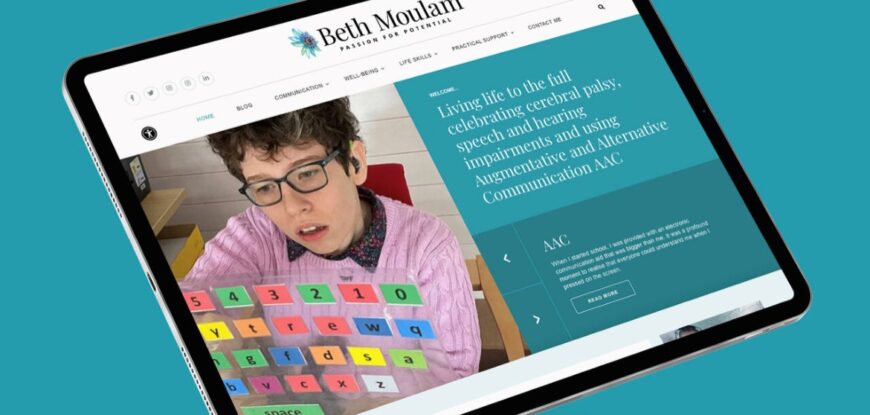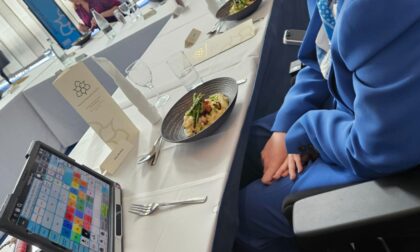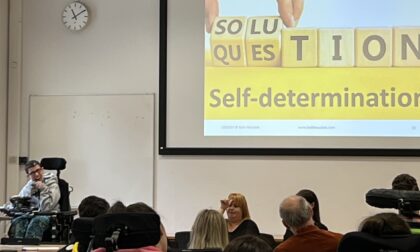We live in a society where we supposedly have the right to freedom of speech. The majority of the population can say what they think, when they want and where they want. Speech is a privilege that many people take for granted. I’d like to turn this concept on its head for a moment. If like me you have a speech impairment then using AAC speech is not free, it comes at a cost.
This cost is twofold, first, there is the monetary cost of having the kit to able to speak. Second, there is the human cost to have freedom of speech through access to communication partners, resouces and programming.
Funding speech
By monetary cost I mean having the funds or funding to be able to access specialist equipment for speech output. This covers the cost of the speech device, the software installed on the box, an access method such as an eye gaze system, a pointer or a switch. Most users will need mounting systems on wheelchairs, or stands to go onto tables and desks. Then there are the costs of insurance and warranty. The equipment needs to be maintained, so cleaned, serviced and charged each night. And, in the current economy, this is one more piece of equipment that needs energy. None of this comes free or cheap, each element has a cost. With AAC speech is not free.
Access methods
Having the box of tricks isn’t quite enough. Yes, some people can use a finger or body part to access their equipment, but not all. Everyone is an individual so there will be a cost implication for the access method, be it a stylus, switch or possibly an expensive eye gaze system. You can find out more about access methods here.
Positioning, mounting and peripheral equipment
Using a communication aid means optimal positioning. This has to be right so the user can easily input their equipment. By this, I mean the right postural support such as a specialist wheelchair or desk chair. Then, the communication device needs to be either mounted on the chair (think several hundred pounds) or positioned on a table. Mounts cost money as they need to be flexible enough to be tailored to the individual’s ideal position for efficient input. They also need to easily swing away so we can get in and out of our chairs easily.
If we are sat at a table or desk then a stand is usually needed. After years of trial and error and some expensive options, I use a ‘roly moley’. A small fabric roll created by Mum which is full of rice and provides a sloped working surface when my device is laid against it. This actually only costs pennies using fabric offcuts and basic price rice, nevertheless, it still costs, and there is the time needed to make it!
I also use a holder for my stylus so it’s easy to pick up and doesn’t get lost. Again, after years of trying different options, I have one-half of a toothbrush holder velcroed on my mount. And, on the desk or table, I use a small pot (think mini jam jar, little plant pot, small beaker). The thing they have in common is they have some weight to them, so they don’t topple over. Again, relatively cheap, but still involves a cost outlay.
Maintenance, troubleshooting and servicing.
I also mentioned maintenance, which needs to be done daily. It isn’t something that a random passerby can help with, there needs to have been training. But there is also the need for troubleshooting and servicing of equipment. Again, unless the equipment funder has had the forethought to pay for a warranty then there is a cost involved. Anyone working in an office knows the IT department is a godsend. Whilst their first advice is usually to switch a device off and back on, they are there for the bigger issues. We all know the headaches we experience if our own home computer develops a glitch and we need outside help to resolve it. Just imagine you cannot talk whilst you sort this out.
Insurance
All equipment breaks down from time to time. You wouldn’t own a car without insurance, and many people also pay for a service plan. The communication aid users I know go out of their way to ensure their equipment is protected from accidents. Many, like me, have otterbox or defender covers. If education fund this equipment then they usually insure it. I remember another child driving their chair over my bag when a staff member put it on the floor and inside was my communication device. Accidents happen, so communication aids need to be added, often at a premium, to household insurance or have a separate policy.
Other types of AAC still cost
There is the cost of paper, printing inks, laminators and lamination sheets, folders and more. These may not cost the same as an electronic device but just as much work goes into setting up and maintaining a low-tech communication system.
I’m lucky, I use a simple letter card, but even then it takes time and effort to make.
People power
Then we have the human cost, all of which actually cost money. This can be broken into a number of areas;
Communication Partners
Many AAC users have a need for a communication partner who is a trained facilitator. These are skilled and empathic people who scaffold, prompt, translate, clarify, and more, depending on the need of the speaker. In my case my personal assistants undertake some crucial roles to facilitate my communication:
Translating my natural speech in spontaneous situations where AAC is too slow. The best example is probably in university when I want to contribute and the discussion has moved on too fast if I were to programme my thoughts. They verbatim relay what I have said to others.
Deflecting questions to me. Sadly many people talk over my head or ignore me, so my personal assistant makes sure the question is clearly deflected to me to answer.
Modelling good communication skills so others can observe and learn how to interact with me.
Giving me processing space and time, I need a nanosecond sometimes to gather my thoughts. This is because I think in visuals and not words, so I have to translate a question into ‘my language’, process and then re-translate my reply. It’s not much but they might say something to the speaker like “great question” or “interesting” whilst looking at me. This takes the pressure off me whilst I process what I’m going to say. You can read more in my blog about thinking time or a mind blank.
I’m fortunate my funding means I always have a communication partner as I have 24/7 personal assistance.
Programming
Again, many AAC users need someone to programme their device, not just with the base set up but with evolving vocabulary. Often this falls to the team in school, although some parents also take on the responsibility for ensuring vocabulary relevant to family life is programmed. At this point, we will assume they give you all the words you need in that programming, if not then it’s possible freedom of speech has been infringed. This is probably a topic for another blog so I won’t go off on a tangent here.
Often when AAC users leave education their ability to evolve their programming to reflect their changing lives comes to a halt. Either there is no one on their support team with the skills or their social care funding package has overlooked this essential need. In this I consider myself fortunate, I am literate and can input what I want when I need it. Although, my method of word recall and spelling does occasionally slow me down.
Other human costs
It may not seem like much but as part of their job role all my team carry out basic tasks that enable me to communicate. These tasks include ensuring my device is charged each night, and the screen cleaned as a routine as and when needed. Then that wherever I am I have my communication aid with me. So, as I move from my powerchair to my walking frame to the sofa. Alternatively sat at my desk or in bed my device comes with me. My CP means I often drop my stylus so you will often find them crawling on the floor to retrieve it too!
Just a thought (or two)
Funding bodies only seem to be able to look at the present need. AAC users grow up, get older, move on and have changing needs. Personal assistants change and newbies need to be trained as communication and AAC support partners. All technology has a limited life, the hardware continually has updates, the software improves, and devices become obsolete. Things break so the cost of communication is not a one-off, but a cost for life. Sadly, using AAC speech is not free.
What would be really good to have is a comprehensive cost-benefit analysis of the cost of communication aids versus the difference it makes across a user’s lifetime. Does this exist? The investment in essential resources should be offset against our quality of life. There is plenty of research that when we can access family and community life, education and contribute to society by volunteering and working our physical and mental health is improved.
I never take for granted my ability to speak. I have the freedom with my communication aid to say what I want, where and when I want to say it. But for me, and other AAC users, freedom of speech definitely is not free. You can find out more about my views on AAC and communication here.





If you found this interesting or
helpful please feel free to share.